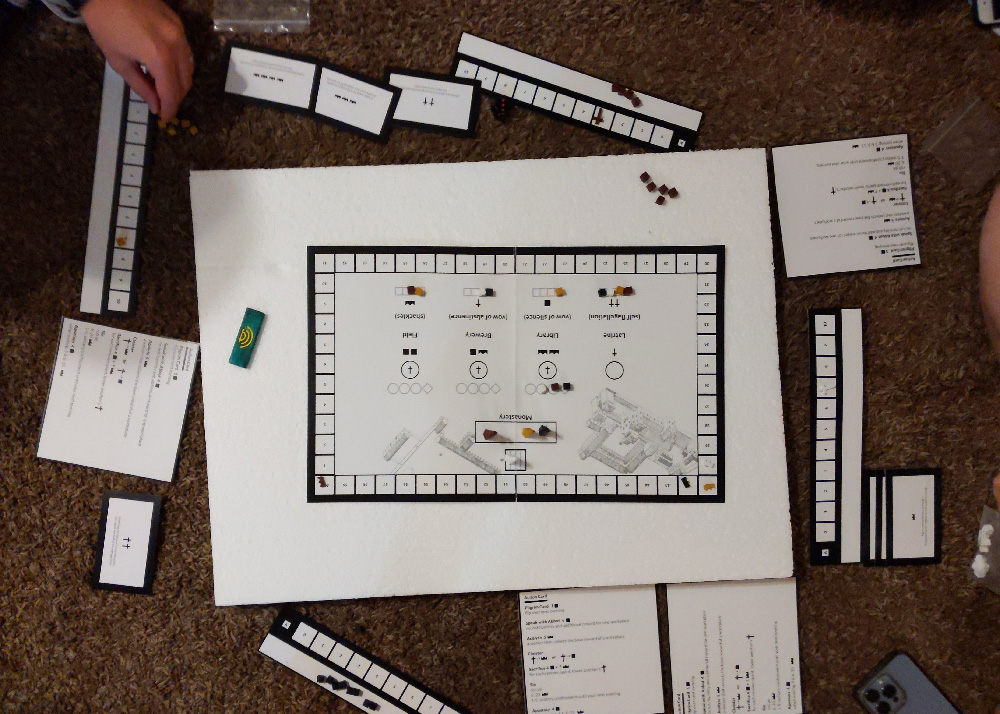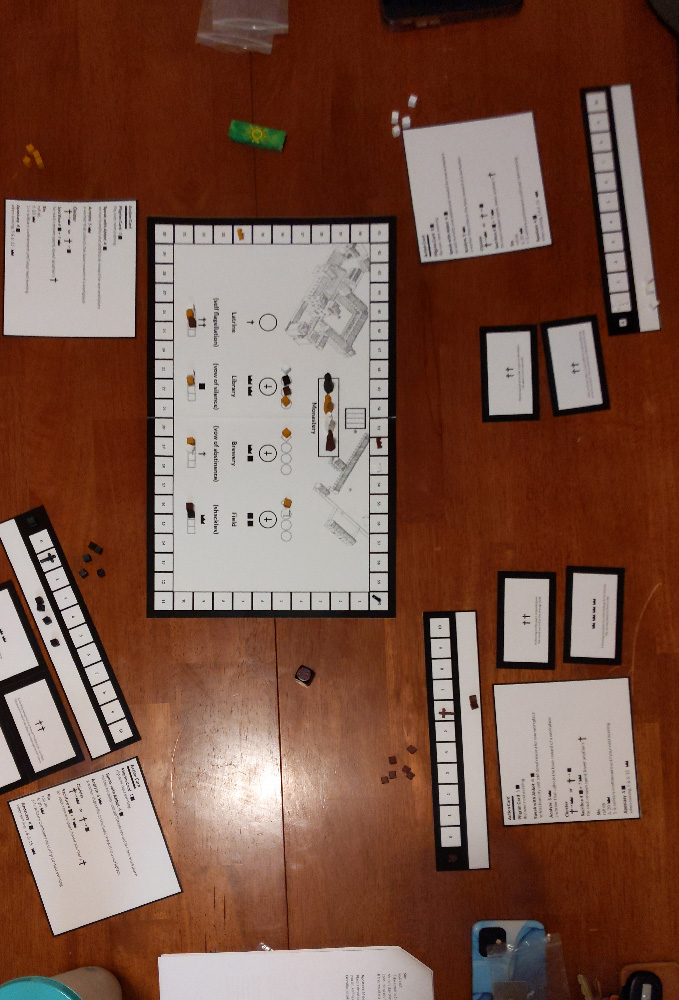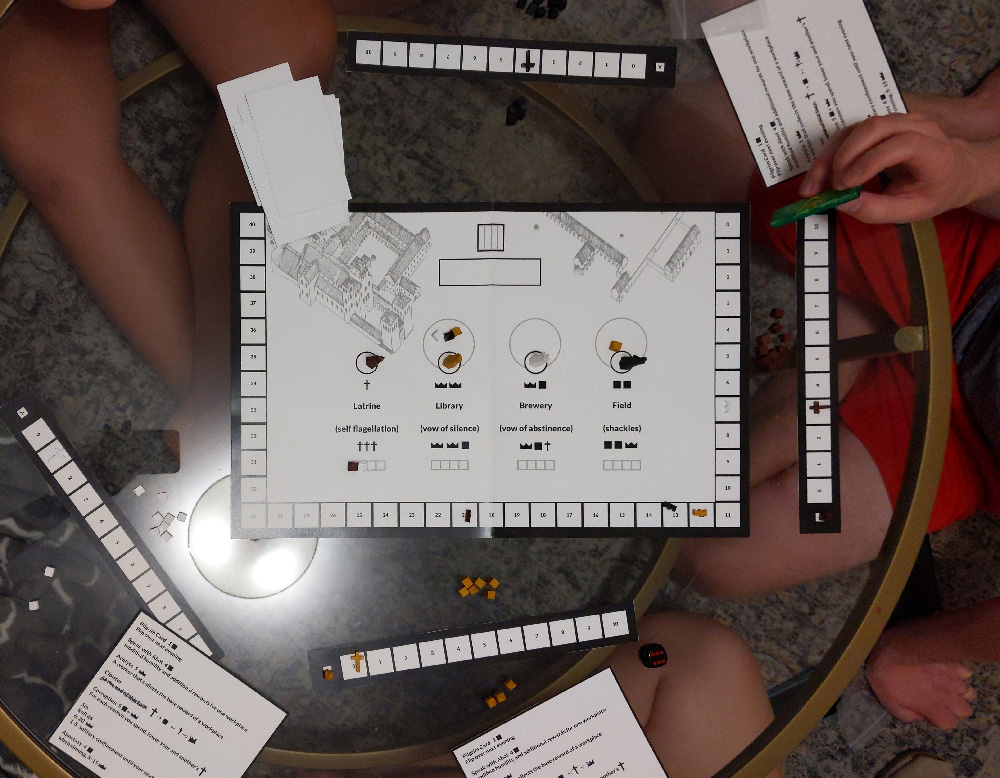A four-player strategy board game inspired by Father Zosima in The Brothers Karamazov
Challenge 1. Write an understandable rule system.
Challenge 2. Create a usable and intuitive board. Challenge 3. Find a balance between pure strategy and risk/fun.
Challenge 2. Create a usable and intuitive board. Challenge 3. Find a balance between pure strategy and risk/fun.

prototype in play
Challenge 1. Write an understandable rule system.
The first iteration works on paper, but over the course of 20+ playtests and 60+ players,
I had to invalidate parts of the rules in order to refine them.
One example of this is a rule for players to be able to attack each other. I had to change the rules many times because players would not use the mechanic even though in reviews players would say they wanted to.
By focusing on making the rules consise and usable, I’m minimizing and addressing some of the biggest pain points players had with the game.
One example of this is a rule for players to be able to attack each other. I had to change the rules many times because players would not use the mechanic even though in reviews players would say they wanted to.
By focusing on making the rules consise and usable, I’m minimizing and addressing some of the biggest pain points players had with the game.

example rule refinement

first version of the rules

latest version of the rules
Challenge 2. Create a usable and intuitive board.
I have been able to track player comprehension of the playspace and rules, through playtests and recording where pieces are placed.
One insight is that players will place pieces where they think they go. The way players placed objects informed me as to what was intuitive, and how players were understanding the information the ruels were trying to convey.
The following board iterations capture player informed changes over time.











playtests

first iteration for jobs & latest iteration for jobs

brewery iterations
Challenge 3. Find a balance between pure strategy and risk/fun.
I approached this in a heavy handed way: by adding a sinning mechanic (high stakes gambling). I validated this mechanic by seeing how often people would be engaged and excited, or even say “this is a fun game” when they sinned.
One takeaway is that people would, unprompted, project their own beliefs onto the experience. If they lost and also went to jail for sinning, they would say that they deserved it.
The other takeaway is that the most exciting and raucous parts of the playtests usually involved this mechanic. I also used statistics to make sure that it would still balance out for the largest amount of games.
In python, my friend helped simulate the statistics for a sinning-only strategy. This, combined with average playtest length, has helped to keep the mechanic fair.

number of games by game length

graphic design iteration

game pieces





cover art sketch & subsequent AI concepts